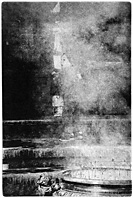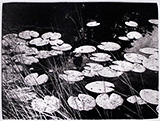The fame of the Leaning Tower of Pisa is due entirely to accident, differential settlement of the swampy ground on which it was built. No one could have planned this monument — yet it is just this accidental quality that makes it so magnetically attractive to all who visit. Resisting the pull of gravity, which it seems could reduce it to a pile of rubble at any time, it stands as a monument to the mysterious forces of nature, and a reminder of how unsteady our foundations are.
The Leaning Tower is only four degrees off the vertical. This doesn’t seem like much, but its 56 meter (184 feet)-high top is displaced 2.5 meters (eight feet) from where it would be if perfectly upright. Stabilized by bracing at its current quirky inclination, the Leaning Tower marks a striking departure from the conventional rectilinear urban skyline.
Freeing one’s perspective from the rectilinear grid opens up new architectural possibilities, as the arches and domes found throughout Italy testify. To climb up to the top of the Leaning Tower generally requires waiting an hour or two, because the number of people admitted is limited for safety reasons. But this is one well-worn monument that is worth the wait. You can hear the Tower bells on the quarter-hour. Or the adjoining Cathedral can easily absorb the waiting time.
The entire complex is clad in white marble, and gives the impression of a ‘city on a hill’, or a ‘second Rome’ as its builders liked to style it. Visitors may find it surprising the Cathedral and Tower are so far from the center of modern-day Pisa, but archaeological excavations have determined that it was once beside a river (which may account for the instability of the ground) and an active port.
Returning to the Leaning Tower: Having experienced the curious disorientation of seeing it from afar, then seeing it up close, one can nevertheless feel secure that only one element of the landscape is out of kilter. Everything else in the vicinity looks quite stable. But in climbing up the Tower’s nearly 300-step spiral staircase, mostly enclosed by stone walls, the entire environment is tilted. Even while ascending, it seems to dip down on one side, level out, and incline upward on the other side. It is rather like the sensation of riding in a train while the train on the next track is going slightly faster, and feeling like you are moving backwards. A parapet about two-thirds of the way up is also tilted. Continuing up, the spiral narrows, then finally emerges at the top. Here, the previous disorientation is resolved, like a dissonant chord into harmony; with the Dome of the Cathedral beckoning to the orange-tiled houses and the distant mountains.




